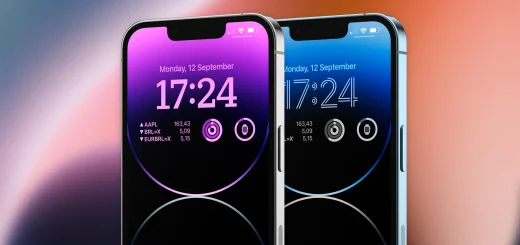Here How To Block Texts On Iphone In A Few Taps
Unwanted text messages, whether from known contacts, strangers, or scam senders, can be a persistent nuisance. Fortunately, there are several ways to manage and block these messages on your iPhone. In this guide, we’ll explain how to block text messages, as well as how to report spam and scam messages to Apple and your carrier.
While it may be tempting to delete unwanted texts, taking a few extra seconds to block the sender or unsubscribe can prevent future interruptions and save you time in the long run.
Blocking a number on your iPhone not only prevents future text messages but also blocks phone calls and FaceTime requests from that contact. Below, we’ll walk you through two methods for blocking texts on your iPhone.
It’s important to note that blocking a number will stop messages from that specific number, but it won’t stop scammers or automated systems from using new or different numbers. However, with recent regulations from the FCC requiring carriers to block scam texts, this type of unsolicited contact may become less frequent.
In addition to blocking unwanted messages, we’ll also cover how to report spam and scam texts to Apple and your mobile carrier, helping to protect you and others from fraud.
How to block texts on iPhone
Blocking unwanted text messages on your iPhone is a straightforward process. Here’s how you can block a specific contact or number from sending you texts, calls, and FaceTime requests:
Method 1: Block a Contact or Number from the Messages App
- Open the Messages App
Launch the Messages app on your iPhone. - Select the Conversation
Find the conversation with the person or number you want to block and tap to open it. - Tap the Contact Name or Number
At the top of the conversation, tap the contact name or phone number (if it’s not saved in your contacts). - Select “Info”
In the contact view, tap the Info (i) button to open more details. - Block this Caller
Scroll down and tap Block this Caller at the bottom. Confirm your choice when prompted.
This action will block all future texts, calls, and FaceTime requests from the number or contact.
Method 2: Block a Number Through Settings
If you want to block a number that hasn’t contacted you yet or one that you want to block from all communication (calls, texts, FaceTime):
- Open Settings
Go to your Settings app. - Go to Messages
Scroll down and select Messages. - Blocked Contacts
Scroll down and tap on Blocked Contacts. - Add New Blocked Contact
Tap Add New at the bottom, then select the contact you want to block from your contacts list. If the number is not saved, you can enter it manually in the Messages app, then follow the steps above.
Once you’ve blocked a number, you won’t receive any texts or calls from it.
Method 3: Block Unknown Senders
If you want to automatically filter and block texts from unknown senders, follow these steps:
- Go to Settings
Open the Settings app. - Messages
Scroll down and tap Messages. - Enable “Filter Unknown Senders”
Scroll down to find Filter Unknown Senders and toggle it on. This will send messages from people who are not in your contacts directly to a separate tab in the Messages app, helping you avoid spam.
This feature doesn’t block the numbers, but it helps you keep unsolicited messages separate from those you want to see.
Additional Tip: How to Unblock a Number
If you ever want to unblock someone, simply follow these steps:
- Go to Settings
Open the Settings app. - Phone > Blocked Contacts
Tap Phone, then scroll to Blocked Contacts. - Unblock the Number
Tap Edit in the top-right corner, then tap the red minus icon next to the number you want to unblock. Confirm by tapping Unblock.
By following these steps, you can easily block and manage unwanted texts on your iPhone.
How to manage blocked numbers on iPhone
To unblock a number on your iPhone, follow these steps:
- Open the Settings app.
- Scroll down and tap Phone.
- Scroll down again and select Blocked Contacts.
- You’ll see a list of all the numbers you’ve blocked (including those for texts and calls).
- To unblock a number, tap Edit in the top-right corner, then remove the number. Tap Done when you’re finished.
- Alternatively, you can swipe left on a blocked number and tap Unblock.
This will restore communication with the unblocked number for texts, calls, and FaceTime.
May you also like it:
How Apples Handling Privacy With Ios 18.2s Chatgpt Integration
Hearing Health Airpods Pro 2 Available
Instagram And Facebook Are Currently Down For Many People
How to report scam messages
If you receive scam messages on your iPhone, it’s essential to report them so that the issue can be investigated and potentially prevent further fraudulent activity. Here’s how to report scam text messages to both Apple and your carrier:
1. Report to Apple (via iMessage)
Apple has a built-in feature to report scam messages sent via iMessage. Here’s how you can do it:
- Open the Message
Go to the Messages app and open the conversation with the scam text. - Tap the Contact Name or Number
At the top of the conversation, tap the contact name or phone number. - Tap the “Info” Button
Select the Info (i) icon to open the details for that contact or number. - Report Junk
If the message is from an unknown sender and is marked as Junk, you’ll see a Report Junk button at the bottom of the screen. Tap Report Junk and then confirm your action. This will send the message to Apple, helping them investigate and block similar messages in the future.
2. Report to Your Carrier
Most major carriers have services that allow you to report scams or spam text messages. Here’s how to do it:
AT&T
- Forward the scam message to 7726 (which spells “SPAM”).
- You will receive a reply asking for the sender’s number.
- Once you provide it, AT&T will investigate and take appropriate action.
Verizon
- Forward the scam message to 7726 (SPAM).
- Verizon will respond with instructions for reporting the number.
T-Mobile
- Forward the scam message to 7726 (SPAM).
- T-Mobile will review the report and take action against the spammer.
Sprint (Now part of T-Mobile)
- Forward the message to 7726 (SPAM).
- Follow the on-screen prompts to complete your report.
3. Report to the Federal Trade Commission (FTC)
If you receive a scam message that’s particularly concerning or if it’s part of a more enormous scam, you can also report it to the Federal Trade Commission (FTC). The FTC helps track down fraudsters and prevent future scams.
- Visit reportfraud.ftc.gov.
- Provide details about the scam message, including the phone number, the content of the message, and any other relevant information.
4. Block the Number
After reporting the scam message, it’s a good idea to block the number to prevent further messages from that sender. To block a number, follow the steps in the earlier section on blocking numbers on your iPhone.
Why Reporting Scam Messages is Important:
By reporting scam messages, you’re helping to prevent others from falling victim to similar scams. Carriers and Apple use these reports to improve their filtering systems and protect users from fraud.
Frequently Asked Questions
Can I block text messages without blocking calls on my iPhone?
No, when you block a number on your iPhone, it blocks both texts and calls from that number. Blocking a contact will prevent them from sending you messages, calling you, and making FaceTime requests.
Will blocking a number on my iPhone stop them from leaving voicemails?
Yes, blocking a contact or number on your iPhone will stop them from texting or calling you. However, they can still leave a voicemail. If you want to prevent voicemails as well, you’ll need to contact your carrier to block voicemails from the number.
Will blocking a number on my iPhone stop FaceTime calls as well?
Yes, when you block a number, it will block not only text messages and phone calls but also FaceTime calls from that number. You won’t receive any FaceTime requests from blocked contacts.
Can I block texts from a specific app or service on my iPhone?
While you can’t block texts from specific apps, you can block numbers associated with unwanted services directly through the Messages app. Additionally, you can unsubscribe from specific promotional texts (such as from retailers) by replying with “STOP” if they offer that option.
Does blocking a number on my iPhone stop them from seeing if I’ve read their messages?
Yes, if you block a number, they won’t be able to see whether or not you’ve read their messages. Additionally, any messages they send will not be delivered to you, so they won’t see the “Read” receipt if you have it enabled.
What happens if I block a number on my iPhone and they send me a text?
Once you block a number, any text messages sent by that number will not be delivered to your phone. You won’t receive a notification of the message, and it will not show up in your messages list.
Can I block messages on my iPhone from specific countries or area codes?
Currently, the iPhone doesn’t allow you to block texts based on country or area code alone. However, you can block individual numbers manually or use third-party apps designed to block unwanted messages.
Conclusion
Blocking unwanted text messages on your iPhone is a simple and effective way to manage your communication and avoid unwanted interruptions. Whether you’re dealing with spam or scam messages or just prefer not to receive texts from specific contacts, the iPhone offers several ways to block numbers and filter unwanted messages.
By using built-in features like blocking contacts, enabling “Filter Unknown Senders,” and reporting scam messages, you can take control of your messaging experience. While blocking prevents messages, calls, and FaceTime requests from specific numbers, it’s important to remember that scammers can still use different numbers, so vigilance is key.



